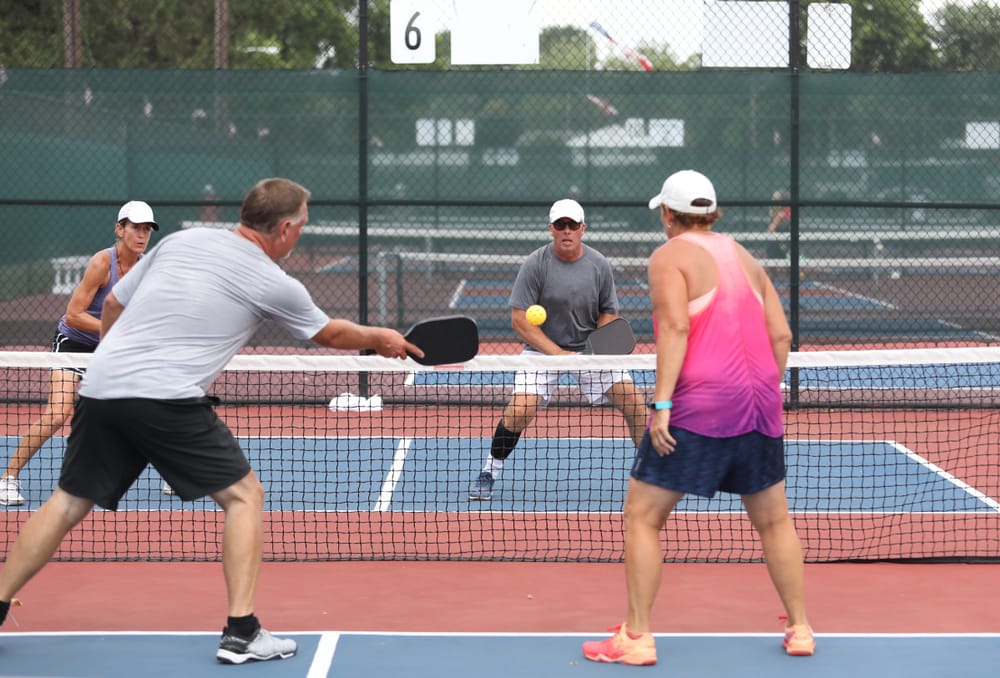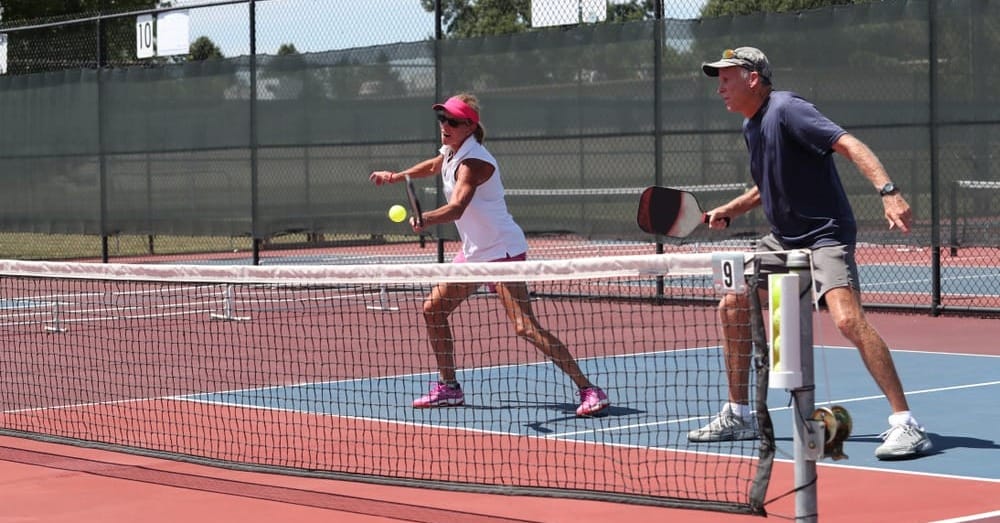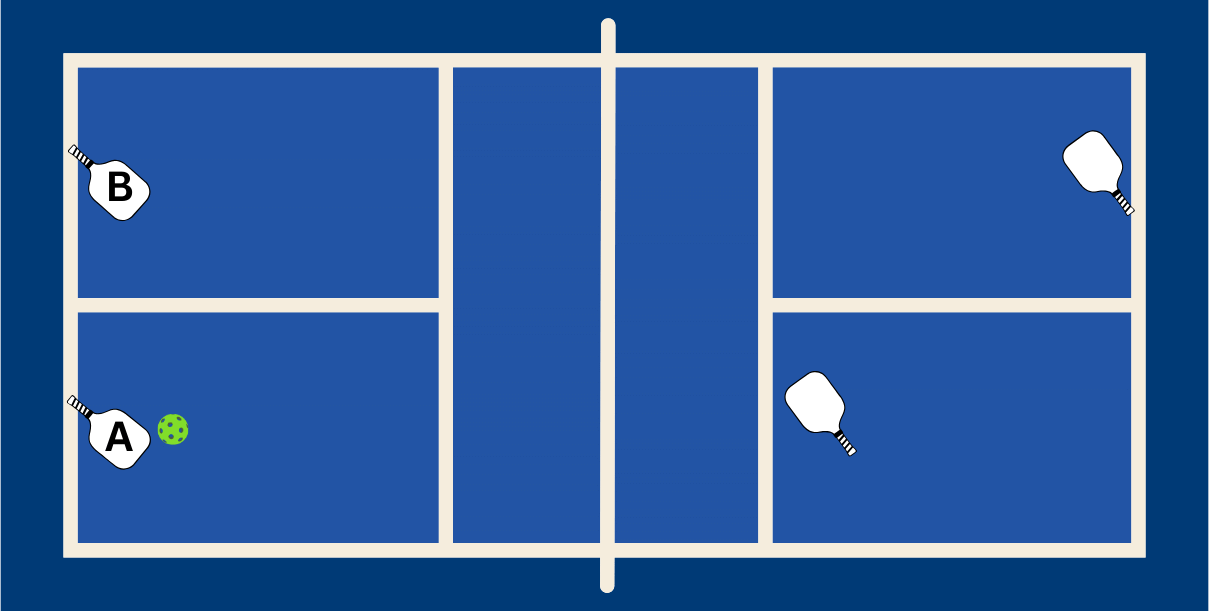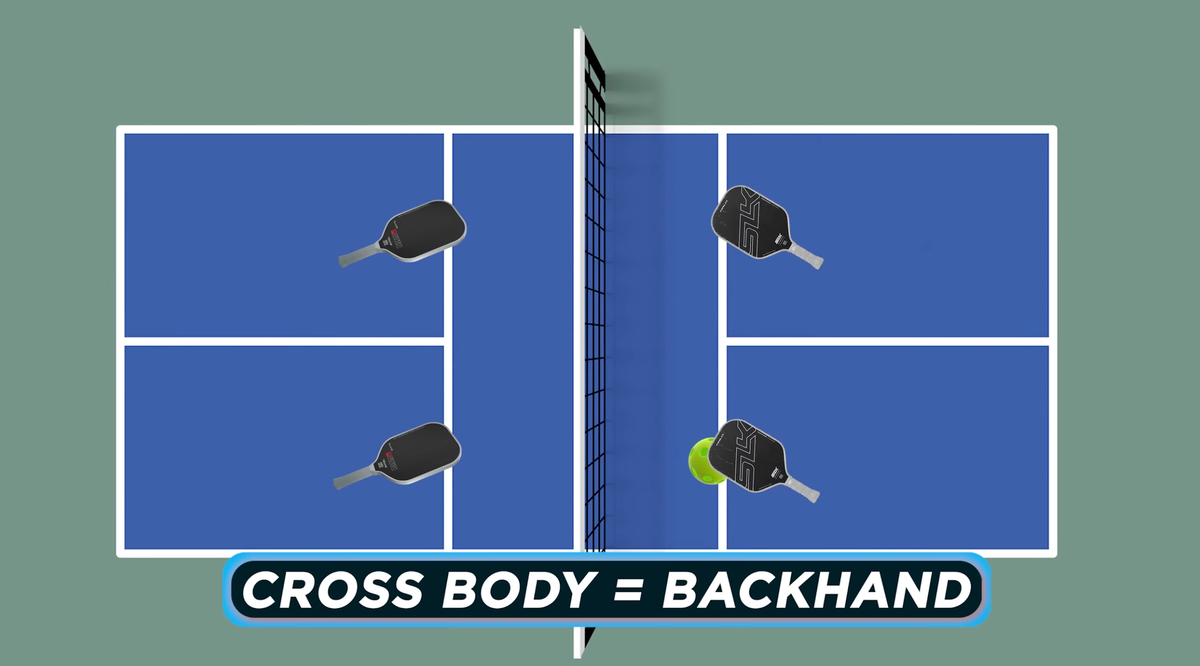In doubles pickleball, you and your partner change places each time your team scores a point. This gives both players equal opportunity to play the left and right sides throughout a match.
This is how everyone is taught how to play pickleball.
In more competitive play – like leagues or tournaments – you may switch up that strategy and stack with your partner.
We're here to help you understand stacking, including what it is, how it's used, and why you might want to incorporate it into your next pickleball match.
What is stacking?
Stacking is a strategic movement that allows you and your partner to play on your preferred side throughout a match. Stacking is done whenever you and your partner start a point on the "wrong" side.
Simply put, if you are the "left side player," stacking allows you to play on the left side throughout the match. And right-side players play solely on the right side.
Why teams choose to stack
There are two main reasons that teams may decide to stack:
- It puts the most skilled player (or the player with the best forehand) on the left side
- You have a team with a left-handed and right-handed player on it
Let’s look at each scenario more closely.
The most skilled player keeps their forehand in the middle
The first thing to understand is that the pickleball court is not split 50-50. Or, at least, it shouldn’t be. This is because most players can generate more power and reach with their forehand than their backhand.
So, when someone’s forehand is in the middle, they should be given more of the court to work with than the person whose forehand is along the sideline.
When you have a righty-righty team, the player on the left side is the one whose forehand is in the middle.
 When a ball comes middle, it's often the person on the left side's responsibility
When a ball comes middle, it's often the person on the left side's responsibilityIf you have a lefty-lefty team (which might be the rarest sight in pickleball), the player on the right side would have their forehand in the middle. In that situation, a team would concede more balls to the person on the right.
Your team is a lefty-righty combo
First off, congrats on building an ideal doubles pickleball team. Secondly, stacking is easier for you because all you need to remember is that the right-handed player stays on the left, and the left-handed player stays on the right.
This puts both of your forehands in the middle, making the middle of the court an impenetrable force that strikes fear in the hearts of your opponents.
 Having a right- and left-handed player almost ensures no balls will go through the middle
Having a right- and left-handed player almost ensures no balls will go through the middleHow to stack
Now that we’ve discussed why you might stack, let’s explain how to stack in pickleball.
The half stack–offense only
The easiest way to start learning to stack is to "half stack." The half stack occurs only when your team is serving, and all you do is slide over into your preferred positions immediately after the ball is served.
Let’s say player A plays the right side, and player B plays the left.
If you are on your preferred sides, you don’t stack during that point.
 During even points, you are in your preferred playing positions
During even points, you are in your preferred playing positionsHowever, if player A serves from the left side, player B would stand directly to their left. If player B serves from the right side, player A stands directly to their right.
Once the serve happens, the players slide to their preferred positions, and you play out the point.
These diagrams should help you visualize this.
Player A serves and then slides all the way to their preferred position. Player B follows.
Player B serves and then slides all the way to their preferred position. Player A follows.
When you’re the returning team and find yourselves on the "wrong" side, that’s okay. You simply stay on those sides until you get the serve back. That’s why it’s called a half stack.
While this puts your team at a disadvantage when not serving, if you’re new to stacking or don’t want to make the extra movements that a full stack requires, then half-stacking is better than no stacking at all.
The full stack–offense and defense
If you’re reading this and still scratching your head, don’t worry – it’s about to get even more difficult to understand.
The important part to remember about full stacking is that players are in their optimum starting positions when their score is even (0, 2, 4, 6, 8, 10) and in the "wrong" position when their score is odd (1, 3, 5, 7, 9).
So, if you’re the left-side player and your score is odd, you will find yourself on the right side of the court when you’re the returning team.
You can’t move into your preferred position until after the serve and return of serve happens. But you can switch sides with your partner once the ball is returned.
The tricky part of this is that full stacking forces you to take extra steps while the ball is live and can leave you vulnerable if either you are slow in getting to your spot or the return is poor and allows your opponents to drive the ball toward a vacated spot.
These extra steps and the added pressure put on by your opponents make full stacking much more challenging than half stacking.
However, with some practice, you can do it. Here are some diagrams to help.
After player B returns the serve, A slides to the right, and B takes A’s original position.
After A returns the serve, B slides to the left, and A takes B’s original position.
An alternate way to full stack
Besides the way I explained above, there is another way to full stack that eliminates some of the movement from the player at the kitchen line. Here are two diagrams to show that version:
In this version, A stands off to the sideline to start the point. Once B returns the serve, A slides over to their kitchen line position, and B charges to the left side of the kitchen line.
B stands off to the sideline to start the point. Once A returns the serve, B slides over to their kitchen line position, and A charges to the right side of the kitchen line.
Either way you choose to full stack, both players move immediately after the ball is returned, but in the alternative version, the kitchen line player has to move less laterally to get into their optimal position.
Hand signals to use when stacking
You can incorporate hand signals into your game to take your stacking to the next level (because you’re a pro at it now, right?).
Hand signals allow you and your partner to communicate silently and give your opponents fits when playing against you.
The three main hand signals are switch, stay, and fake switch.
Stacking can seem complicated at first. But if you want to incorporate it into your game more, try it out during rec play or practice during drills. After you do it for a few matches, you’ll be more comfortable and ready to use it when it matters most.
Anuncie Aqui / Advertise Here
Sua marca para o mundo Pickleball! / Your brand for the Pickleball world!

 English
English  Spanish
Spanish  Portuguese
Portuguese  German
German  Italian
Italian  Japanese
Japanese  French
French  Polish
Polish  Russian
Russian  Netherlands
Netherlands  Hungarian
Hungarian  Turkish
Turkish  Videos
Videos 








 English (US) ·
English (US) ·  Portuguese (BR) ·
Portuguese (BR) ·